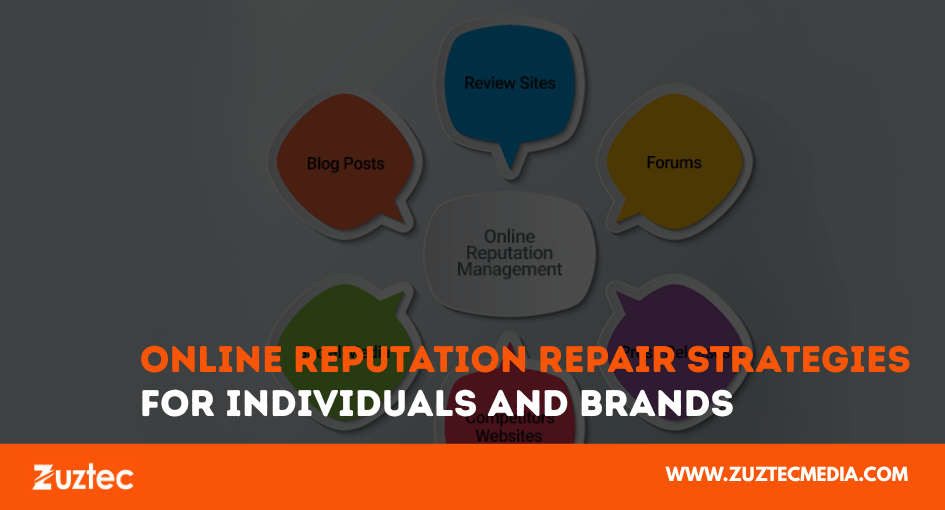
Online Reputation Repair Strategies For Individuals And Brands
Reputation is everything in today’s digital-first world. A single negative review, unfavorable article, or social media post can seriously damage how people perceive a business or individual. The internet keeps records indefinitely, and what’s visible on search engines and social platforms can influence everything from customer decisions to business partnerships. That’s why effective online reputation repair strategies are essential.
Online reputation management isn’t just about creating a good image—it’s about taking control of your digital presence. It involves identifying harmful content, responding strategically, and promoting positive material to restore credibility. Whether you’re a company trying to recover from a PR crisis or a professional with a damaged online footprint, knowing how to manage reputation repair is critical for long-term success.
Repairing a digital reputation takes time, consistency, and the right set of actions. From addressing customer complaints and negative press to improving search engine results with positive content, the process requires a multi-layered approach. Fortunately, there are effective tools and strategies that help repair damage and restore trust.
This article explores the key components of online reputation repair, offering practical strategies that businesses and individuals can apply. By following a structured approach and remaining proactive, it’s possible to recover from setbacks and build a reputation that supports growth and credibility in any industry.
Effective Online Reputation Repair Strategies That Work
These strategies begin with a thorough audit of your digital presence. This means searching your name or brand on major search engines, reviewing social media accounts, checking reviews, and looking for negative press or outdated content. Once problem areas are identified, you can begin addressing them systematically.
The first step is to respond to negative feedback professionally. Whether it’s a bad review or a critical blog post, acknowledging the issue and offering a solution can go a long way. Apologizing when necessary and offering to make things right helps rebuild trust. It also shows others that you care about customer satisfaction and accountability.
Next, focus on promoting positive content. This includes publishing blog posts, customer testimonials, case studies, and press releases that highlight your strengths and achievements. The goal is to push negative content further down in search results, making it less visible to the average viewer.
Creating and maintaining strong profiles on platforms like LinkedIn, Google Business, and relevant industry sites also supports repair efforts. These profiles often rank high in search engines and can showcase your professionalism and credibility. In some cases, it’s also possible to request content removal or de-indexing from platforms that host false or harmful material.
How To Strengthen Digital Presence After Damage
Once the immediate issues are addressed, long-term success depends on strengthening your online presence. Building a consistent flow of high-quality content across various channels helps keep your brand in a positive light. This includes regular blog posts, videos, interviews, and social media activity that aligns with your values and goals.
In the midbody of your reputation recovery journey, transparency is key. If your brand made a mistake, own it and communicate openly about the steps taken to improve. Audiences appreciate honesty, especially when it comes with clear improvements and visible changes.
Search engine optimization (SEO) also plays a major role in reputation repair. Optimizing positive content with relevant keywords helps it rank better in search results. Collaborating with authoritative sites for guest posts or backlinks can also increase visibility and push negative mentions lower in search rankings.
Monitoring tools are essential during and after repair efforts. Tools like Google Alerts, Mention, or Brand24 can notify you of new mentions so you can act quickly when needed. Staying informed ensures you’re never blindsided by new issues and allows for continuous improvement of your online image.
Working With Professionals For Complex Cases
In some cases, the damage is too widespread or persistent to handle alone. That’s when online reputation repair strategies management firms come into play. These professionals specialize in analyzing your online profile, creating tailored content strategies, and using advanced techniques to suppress or remove damaging content.
When choosing a service provider, look for companies with proven experience, transparent methods, and clear communication. Avoid those promising instant results or using unethical tactics, as these can backfire and make the situation worse. A trustworthy agency will guide you through the process, helping you rebuild credibility step-by-step.
Legal support may also be required in extreme cases, such as defamation, false claims, or identity misuse. In such scenarios, working with attorneys who specialize in internet law can lead to content removal through legal action or negotiation with platform hosts.
Keep in mind that even with professional help, reputation repair isn’t instant. It requires patience, strategy, and ongoing effort. The sooner you begin, the sooner recovery starts—and the stronger your online reputation will be in the future.
Conclusion: Consistency Builds A Lasting Positive Reputation
In the conclusion of every successful reputation recovery plan, one lesson stands out: consistency is everything. Online reputation repair strategies are not one-time solutions—they are ongoing efforts to ensure your brand or personal image reflects your values and achievements.
By using a mix of positive content creation, strategic responses, and monitoring tools, individuals and companies can rebuild trust and improve public perception. Over time, a proactive approach not only repairs damage but also builds a stronger and more resilient presence across digital platforms.

